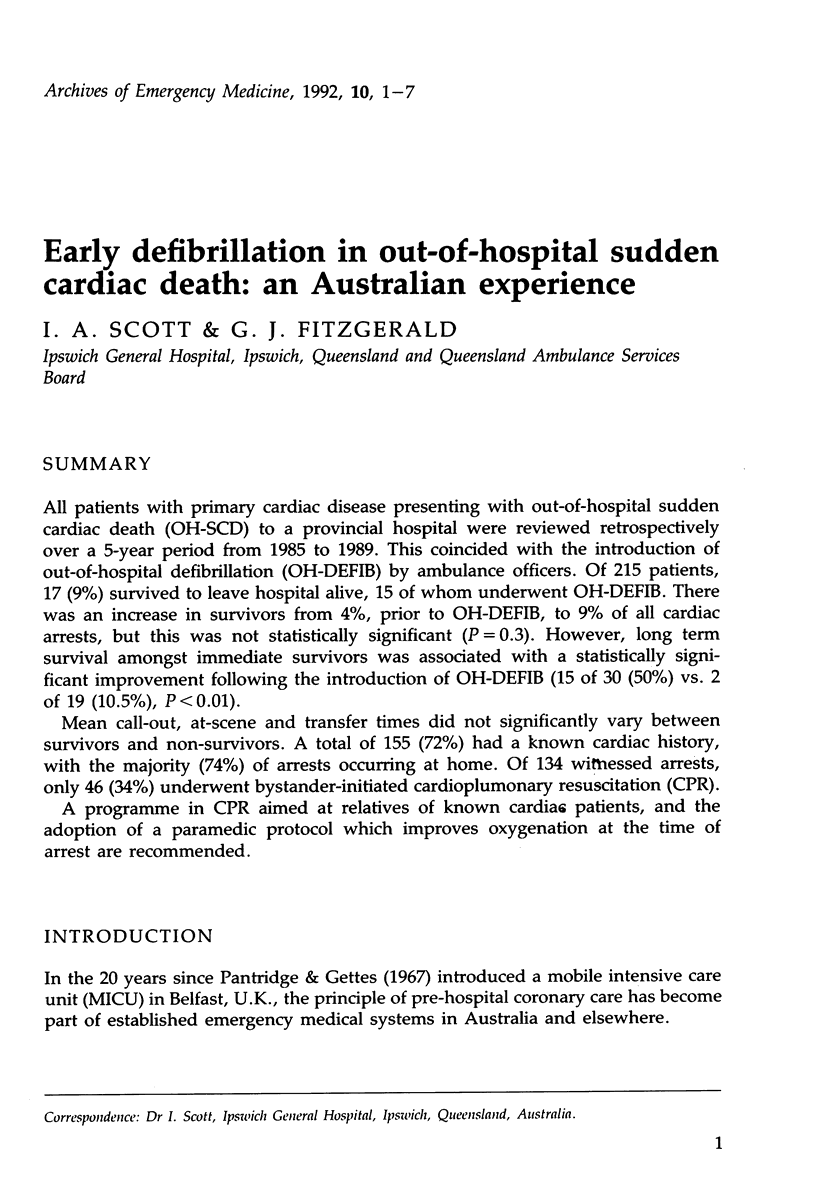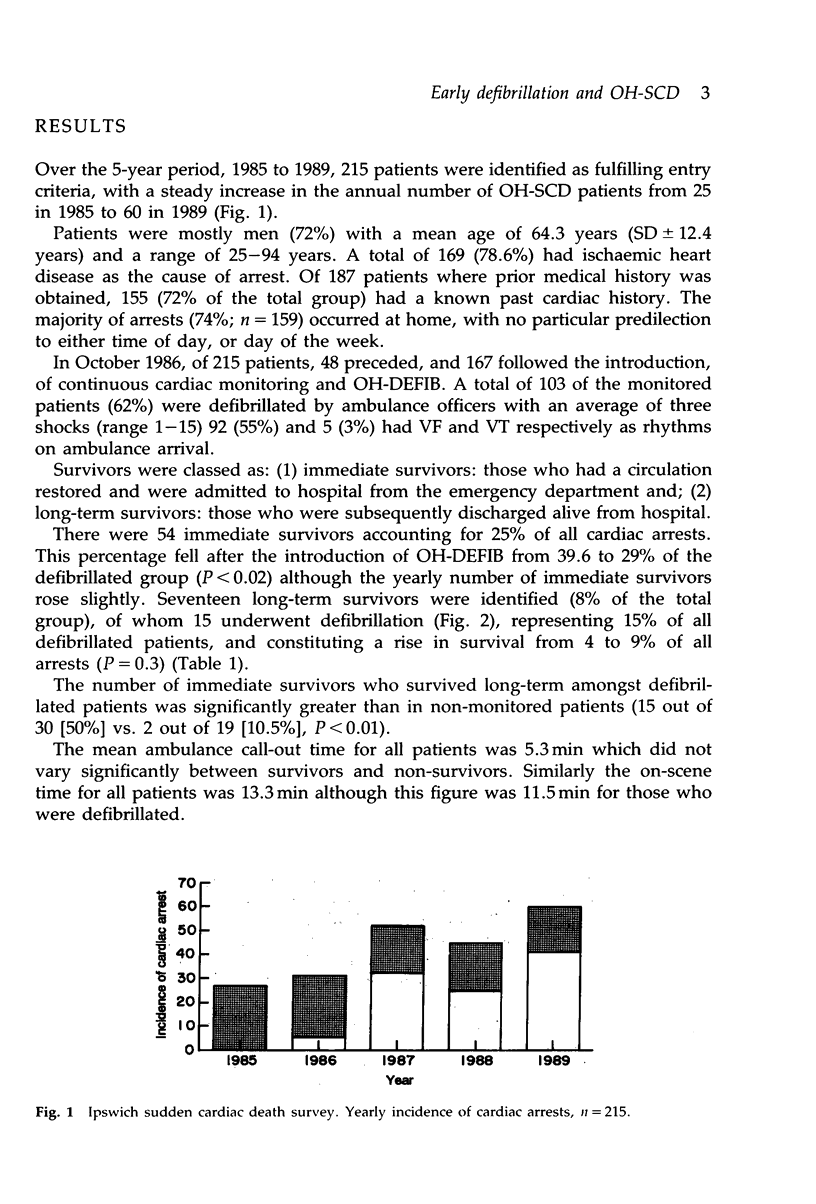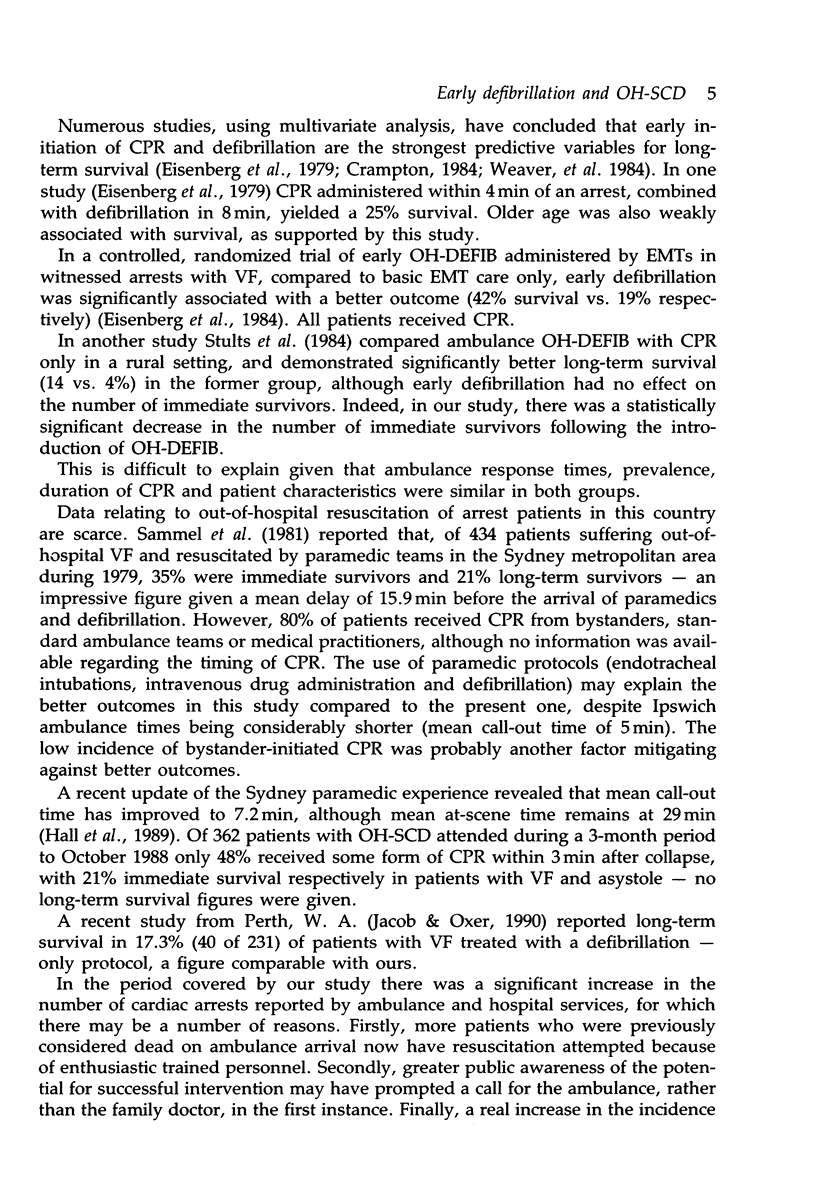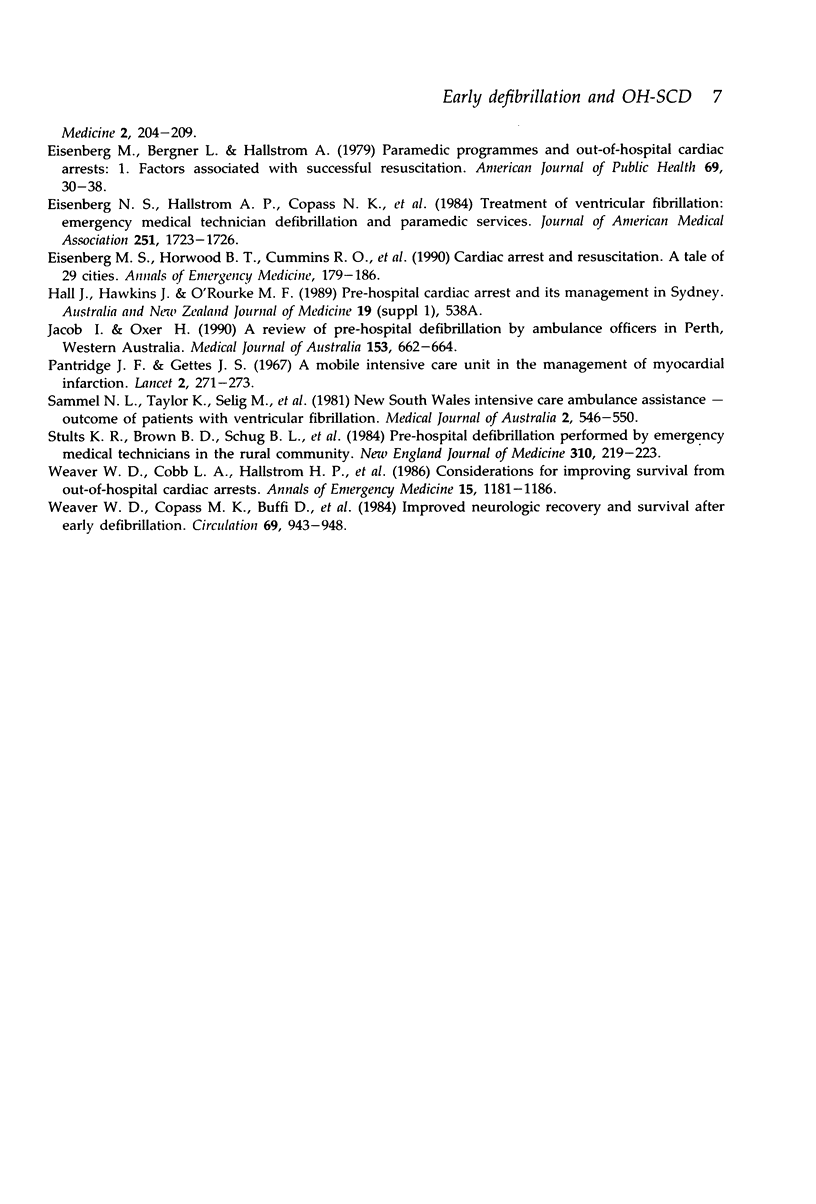Abstract
All patients with primary cardiac disease presenting with out-of-hospital sudden cardiac death (OH-SCD) to a provincial hospital were reviewed retrospectively over a 5-year period from 1985 to 1989. This coincided with the introduction of out-of-hospital defibrillation (OH-DEFIB) by ambulance officers. Of 215 patients, 17 (9%) survived to leave hospital alive, 15 of whom underwent OH-DEFIB. There was an increase in survivors from 4%, prior to OH-DEFIB, to 9% of all cardiac arrests, but this was not statistically significant (P = 0.3). However, long term survival amongst immediate survivors was associated with a statistically significant improvement following the introduction of OH-DEFIB (15 of 30 (50%) vs. 2 of 19 (10.5%), P < 0.01). Mean call-out, at-scene and transfer times did not significantly vary between survivors and non-survivors. A total of 155 (72%) had a known cardiac history, with the majority (74%) of arrests occurring at home. Of 134 witnessed arrests, only 46 (34%) underwent bystander-initiated cardiopulmonary resuscitation (CPR). A programme in CPR aimed at relatives of known cardiac patients, and the adoption of a paramedic protocol which improves oxygenation at the time of arrest are recommended.
Full text
PDF






Selected References
These references are in PubMed. This may not be the complete list of references from this article.
- Eisenberg M. S., Hallstrom A. P., Copass M. K., Bergner L., Short F., Pierce J. Treatment of ventricular fibrillation. Emergency medical technician defibrillation and paramedic services. JAMA. 1984 Apr 6;251(13):1723–1726. doi: 10.1001/jama.251.13.1723. [DOI] [PubMed] [Google Scholar]
- Eisenberg M. S., Horwood B. T., Cummins R. O., Reynolds-Haertle R., Hearne T. R. Cardiac arrest and resuscitation: a tale of 29 cities. Ann Emerg Med. 1990 Feb;19(2):179–186. doi: 10.1016/s0196-0644(05)81805-0. [DOI] [PubMed] [Google Scholar]
- Eisenberg M., Bergner L., Hallstrom A. Paramedic programs and out-of-hospital cardiac arrest: I. Factors associated with successful resuscitation. Am J Public Health. 1979 Jan;69(1):30–38. doi: 10.2105/ajph.69.1.30. [DOI] [PMC free article] [PubMed] [Google Scholar]
- Jacobs I. G., Oxer H. F. A review of pre-hospital defibrillation by ambulance officers in Perth, Western Australia. Med J Aust. 1990 Dec 3;153(11-12):662–664. doi: 10.5694/j.1326-5377.1990.tb126316.x. [DOI] [PubMed] [Google Scholar]
- Pantridge J. F., Geddes J. S. A mobile intensive-care unit in the management of myocardial infarction. Lancet. 1967 Aug 5;2(7510):271–273. doi: 10.1016/s0140-6736(67)90110-9. [DOI] [PubMed] [Google Scholar]
- Sammel N. L., Taylor K., Selig M., O'Rourke M. F. New South Wales intensive care ambulance system: outcome of patients with ventricular fibrillation. Med J Aust. 1981 Nov 14;2(10):546–550. [PubMed] [Google Scholar]
- Stults K. R., Brown D. D., Schug V. L., Bean J. A. Prehospital defibrillation performed by emergency medical technicians in rural communities. N Engl J Med. 1984 Jan 26;310(4):219–223. doi: 10.1056/NEJM198401263100403. [DOI] [PubMed] [Google Scholar]
- Weaver W. D., Cobb L. A., Hallstrom A. P., Copass M. K., Ray R., Emery M., Fahrenbruch C. Considerations for improving survival from out-of-hospital cardiac arrest. Ann Emerg Med. 1986 Oct;15(10):1181–1186. doi: 10.1016/s0196-0644(86)80862-9. [DOI] [PubMed] [Google Scholar]
- Weaver W. D., Copass M. K., Bufi D., Ray R., Hallstrom A. P., Cobb L. A. Improved neurologic recovery and survival after early defibrillation. Circulation. 1984 May;69(5):943–948. doi: 10.1161/01.cir.69.5.943. [DOI] [PubMed] [Google Scholar]


